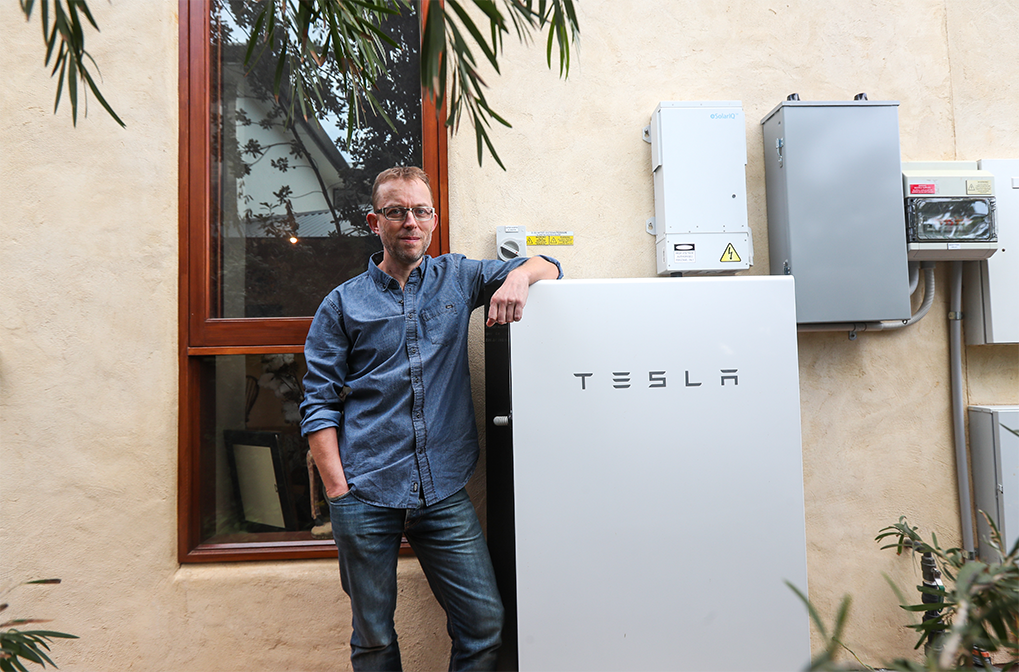All About Virtual Power Plants (VPPs)
Last Updated: 25th Sep 2025
By Finn Peacock – Chartered Electrical Engineer, Ex-CSIRO, Founder of SolarQuotes

Now the federal battery rebate is available, solar batteries are all the rage. A home battery has become a worthwhile investment for millions of Australian households — with most of them in NSW, QLD, SA, and WA. But despite batteries now being effectively far cheaper, it will still be hard to get a good financial return from one in the ACT and VIC, while they’re unlikely to pay for themselves in the NT and TAS.
You can run the numbers for yourself regarding payback using my easy-to-use solar and battery calculator, which separates the savings from solar panels and a battery system. If you already own solar and want to calculate the savings of adding a battery to your system, so long as you have a smart meter you can use my “Add a battery” calculator.
But there’s a potential solution to further improve the economics of home energy storage: Virtual Power Plants, or “VPPs”.
What Is a VPP?
A Virtual Power Plant consists of a network of distributed solar power and battery systems and may include other energy resources and controlled loads (such as electric hot water systems).
In most cases, these Distributed Energy Resources (DERs) are coordinated by a central VPP operator that releases some (or all) of the batteries’ stored energy into the grid during periods of peak demand when wholesale electricity prices are high.
Besides selling electricity, they also make money by charging batteries when electricity prices are negative. They may also receive payments for charging or discharging batteries to help stabilise the grid’s frequency and keep it running smoothly. Providing these services can be a very lucrative game – for the operator.
In a nutshell, you give up control of your battery to a third party when it becomes part of a virtual power plant. In return, you can potentially receive benefits ranging from an upfront discount on the cost of a battery, payments that are either fixed or based on battery energy discharged by the VPP, a higher solar feed-in tariff, or some combination of these.
It’s really important to read the small print on any VPP offer, as some can be quite sneaky about how they pay you for surplus solar energy sent to the grid. If you’re determined to retain control of your battery, there are a couple that leave you in charge of if and when it’s discharged.
Our VPP Comparison Table lists all of the virtual power plant programs available across Australia we’re aware of.
What Are The Pros And Cons Of A VPP?
Pros:
- Some VPPs offer an upfront discount on the cost of a battery. This can take a battery from being ‘too expensive’ to ‘worth considering’. The value and format of the discount vary between programs, with some offering much more than others.
- Several virtual power plant programs offer payments for energy your home supplies to the grid. These can take the form of higher than average solar feed-in tariffs or payments for energy discharged from your battery to the grid. Some offer variable payments that can go higher (some as high as $1 per kWh or more!) based on the wholesale price of electricity.
- Many VPPs provide fixed payments. These may be paid monthly or quarterly.
Cons:
- Many VPPs are BYOB – “Bring Your Own Battery”. This means a) there’s no upfront discount, and b) the battery you already have might not be eligible.
- Virtual power plant programs offering above-average solar feed-in tariffs only marginally improve battery economics. One reason why is solar homes with batteries export less energy than solar homes without them.
- VPP arrangements offering variable payments for discharging a battery to supply the grid use dubious assumptions to make their economic case. It’s unclear how often such ‘grid events’ will happen and how much the participating homeowner will benefit.
- With most VPPs you’re giving up control of your battery to someone else. People usually buy batteries to regain control of their energy usage, not let someone else meddle with it :).
- Some VPPs can hammer your battery as hard as they like, which shortens its lifespan.
- Some leave no (or minimal) reserve battery capacity available for the system owner. This is an important consideration for homeowners who think having a battery = blackout protection.
VPP Incentives
Because they lower the cost of running the grid, two states offer incentives to households to join VPPs:
- NSW has a Virtual Power Plant Incentive that provides a payment for joining a VPP.
- WA has a State Battery Rebate that requires joining a VPP.
- SA offers a REPS VPP incentive that can pay up to $2,050 for connecting a new or existing home battery to a REPS-approved Virtual Power Plant, usually applied for through an authorised activity provider such as MAC Trade Services.
Should You Join A VPP?
I was a participant in AGL’s VPP here in Adelaide. In 2016, I acquired a Tesla Powerwall at a massive discount compared to what’s available now. I paid about $4,000 fully installed. That compares to $15,500 for a fully installed Powerwall today.
After I served the minimum contract period (5 years), I left the AGL VPP and joined the Tesla Energy Plan, which offered an excellent 13c per kWh daytime rate – from 10 am – 3 pm. With two electric cars, and both of us working from home, I liked the idea of a cheap daytime grid rate so we could still cheaply charge the cars over long Adelaide winters when the solar panels were struggling.
However, Tesla has recently upped their energy prices considerably, and their rates are now comparable to non-VPP retailers – so I expect I’ll soon leave the Tesla VPP.

Me posing with my Powerwall
Over a full year, Tesla charged my battery with 1,100 kWh from the grid and discharged 380 kWh from my battery into the grid. This means they were often charging my battery with grid power before my solar had a chance to charge it, just so it would be fully charged in case they wanted to discharge it later. So my battery went through about 100 more cycles than if I wasn’t on their VPP. This resulted in me paying for grid electricity I didn’t need and extra battery wear and tear.
So would I recommend one of the current VPPs to a solar power system owner who wants a battery but can’t justify it at current prices?
Yes – provided you’ve done your homework and are confident you’ll be treated fairly. The touted financial benefits of joining any VPP available at this time of writing aren’t all that impressive, but so long as you join a VPP that doesn’t hammer your battery too hard and doesn’t hit you with hidden costs, they can be worthwhile. Particularly if you’re in NSW or WA where payments for joining one are available. If you have a battery or are planning to get one, joining a VPP can be worthwhile.